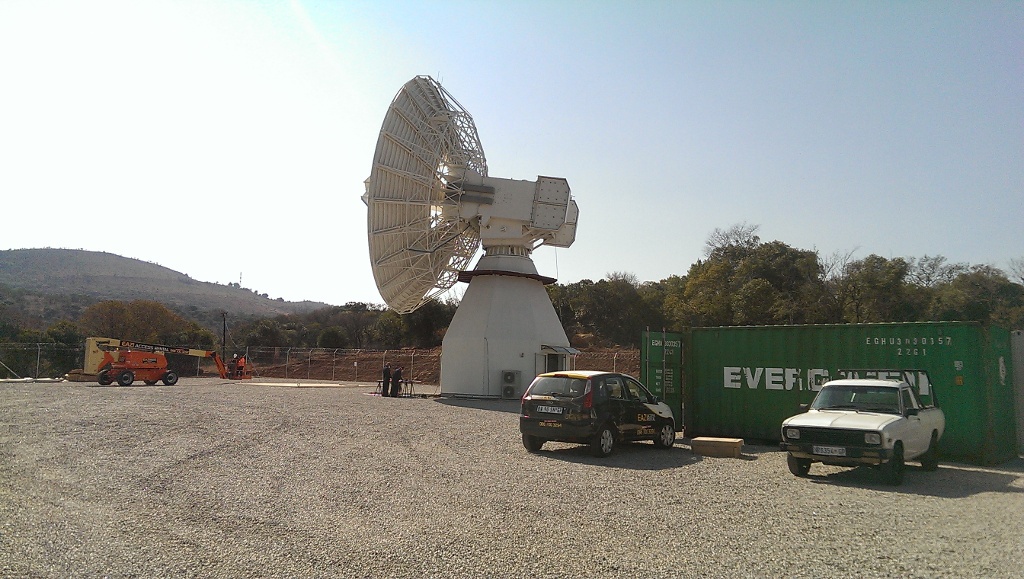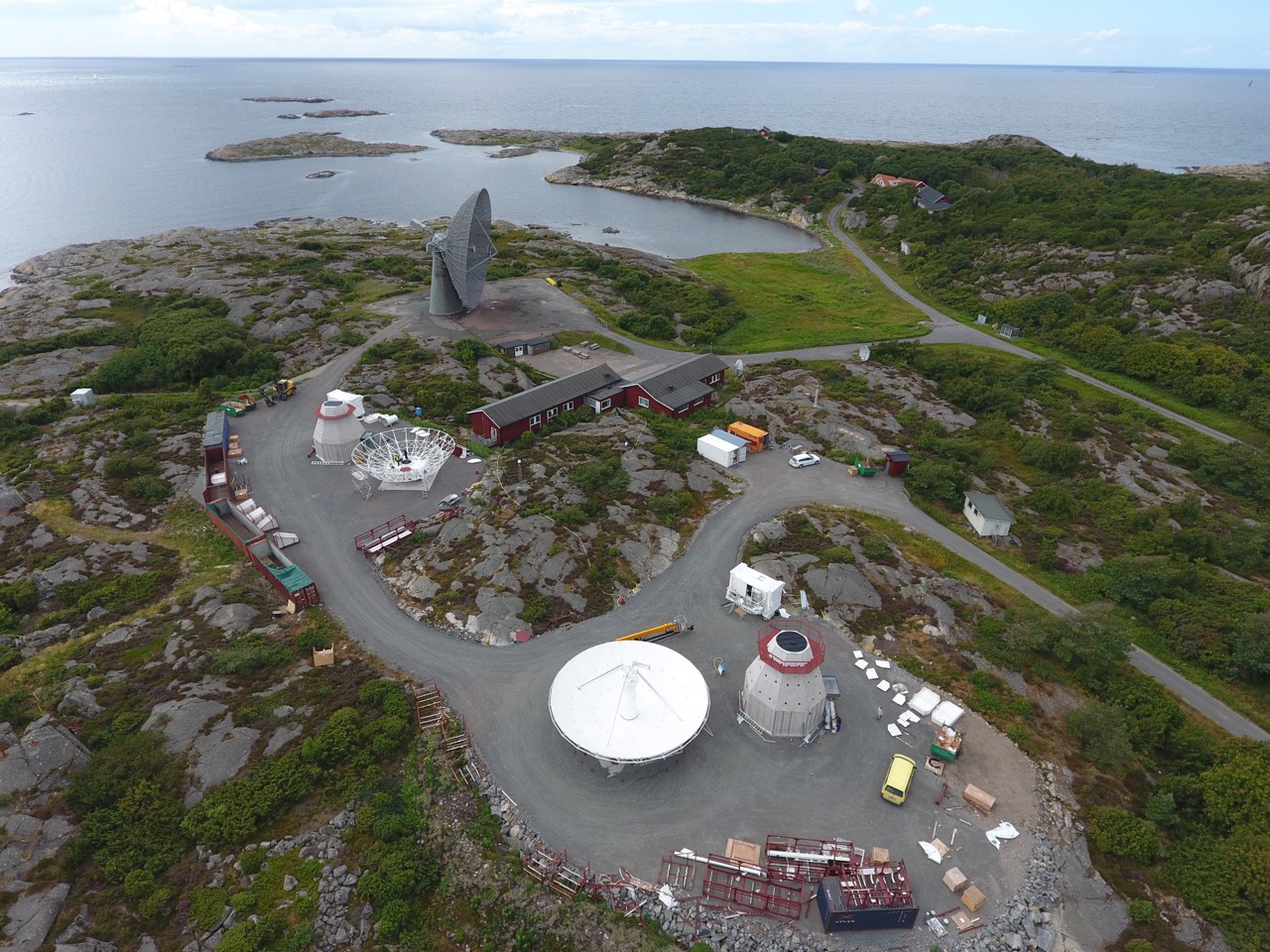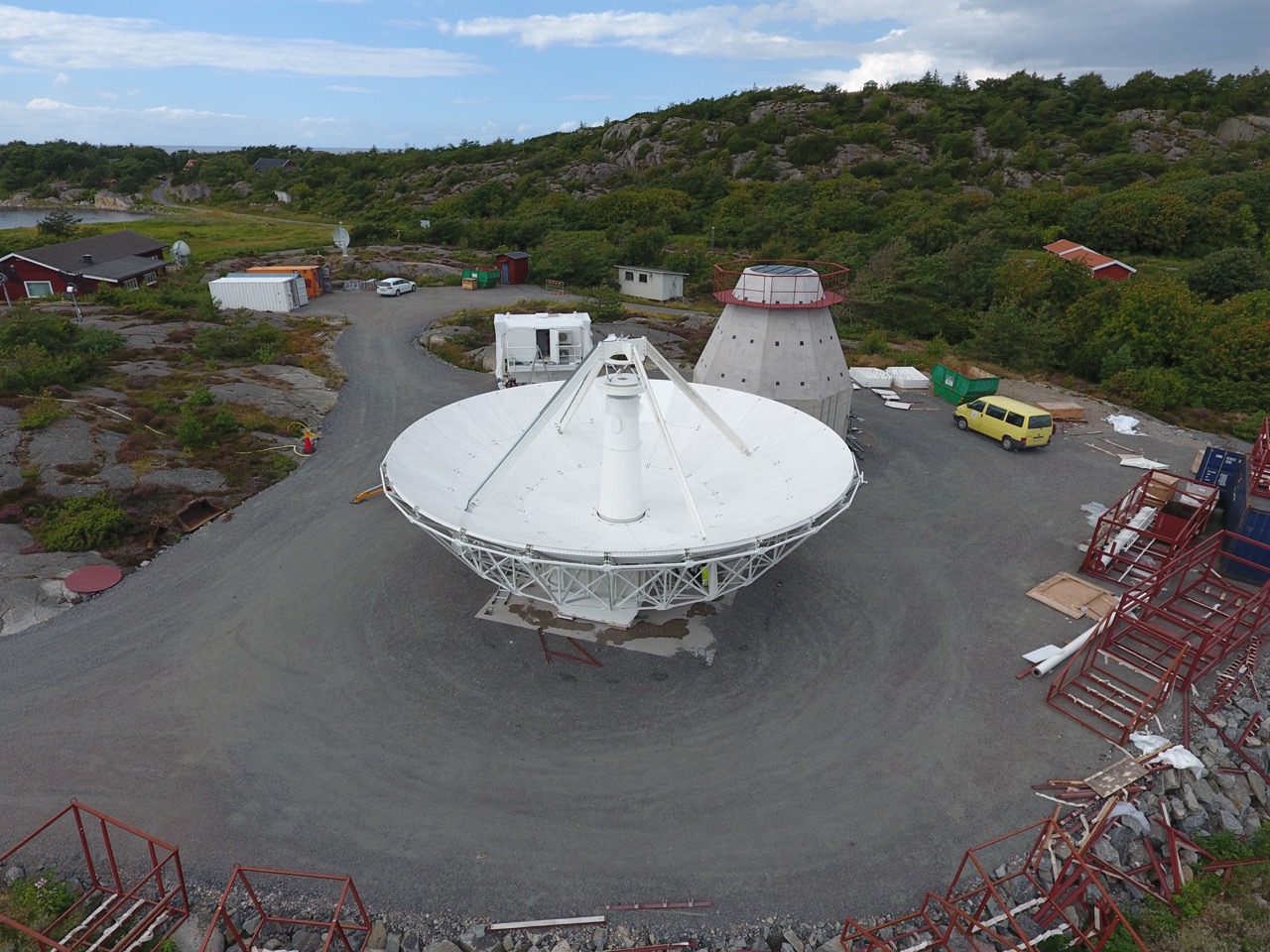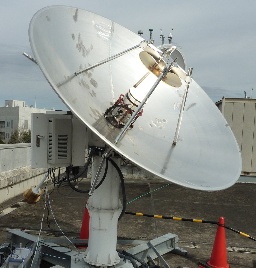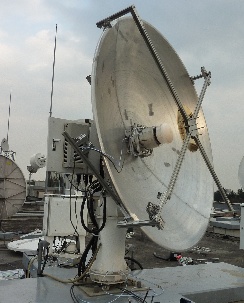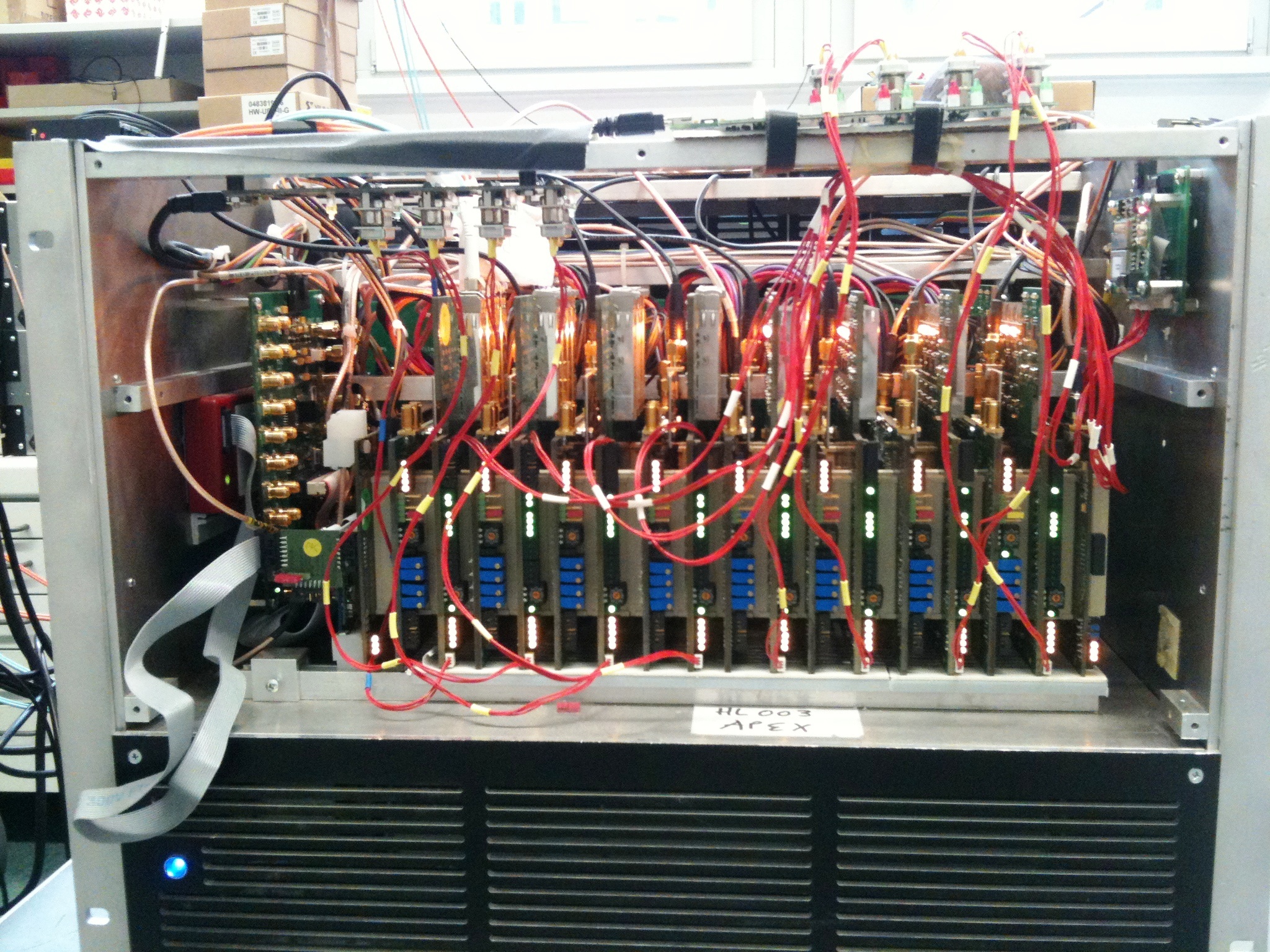Table of Contents
VTC Members are encouraged to contribute short project status reports on this page.
New VGOS stations and station upgrades to VGOS
GGAO
"Failure and repair of the GGAO broadband cryogenics receiver" (PDF) from Ganesh Rajagopalan and Chris Eckert 22 Aug 2016
---
GGAO and Westford resumed their VGOS Demonstration Series sessions in November and have observed three more sessions of 1, 5, and 24 hours.
Arthur Niell - 2016 Jan 27
Kokee
The VLBI Signal Chain had the Sight Acceptance Review (SAR) and continued evaluating the entire VLBI system (antenna, field system, signal chain, etc). K2 observed with the VGT001 (see below) and presently resolving an issue with air condioner failure in the pedestal and impact on continued observing. The operational readiness review (ORR) is still projected to be executed in August.
Chet Ruszczyk - 27 July 2016
The observations for the commissioning phase of the 12m has been completed, ending with three 24 hour observing sessions between K2, Wf, and Gs. TChe data are being correlated and analyzed. We are working toward the VLBI Operation Readiness Review (ORR) now scheduled for August, which means release of final documentation, software and procedures.
Chet Ruszczyk - 25 May 2016
Verification and checkout of 12m is under way.
- Trained the KPGO staff on using the 12m signal chain first week of February
- On Feb. 5th successfully obtained fringes on source 1749+096 with GGAO 12m and Westford Broadband system
- On Feb 12th executed a mixed mode observation, between the 12m and the Kk 20 S/X antenna and successfully obtained
fringes. - We are presently exercising the integrated system (Field system control of antenna and backend subsystems).
- This shakedown period is leading to identifying shortcomings in operational manuals and procedures, along
with potential bugs before the acceptance review.
- This shakedown period is leading to identifying shortcomings in operational manuals and procedures, along
- Full summary of the ongoings at KPGO can be found here: http://space-geodesy.nasa.gov/blogs/KPGO/index.html
Chet Ruszczyk - 24 Feb. 2016
Wettzell
- The Eleven feed is installed and tests are ongoing.
- The amplifiers are kept at 17.00 K continously and the feed itself has a temperature of about 10 K. The feed works well and I have done the first G/T measurements with good results. The G/T values are very similar to that of the Triband-feed, which in turn are really good. I tried to measure the Tsys with a small broadband antenna, but my noise diodes have not enough power to calibrate the system. I need to find a more efficient way. I will continue with the measurements as soon as the weather is good enough.
- A problem arises, since the feed is really ultra-broadband. It works down to 500 MHz and it is able to receive GPS, GSM und terrestrical TV-transmitters as well. Therefore we probably need a high-pass filter to avoid the saturation of the postamp and the receiver.
- Christian and Alex have working to setup DBBCs and the Fila10G to connect it to the Mark6 systems and it is now operational, first feedback tomorrow from correlator Bonn; investigations on controlling Mark6 from Field System is ongoing They have solved a few problems, but it is still a lot of work to do there.
Gerhard Kronschnabl and Alexander Neidhardt - 24 Feb 2016
HartRAO
Current status: Panel alignment is underway (last results were around 90 microns).
Commissioning tests are to be started in the beginning of August.
We have a live camera feed up and running (updated every minute) which can be accessed at: http://www.hartrao.ac.za/xxvgs_liveview.php
Photos from HartRAO VGOS site (14 July 2017)
For updated videos and photos please visit:
Philip Mey - 21 July 2017
Ishioka
- Operation of Ishioka antenna is now under interruption because of construction of operation building, and will resume after April.
- Modification of cryogenic dewar for QRFH system is being done.
Yoshihiro Fukizaki - 28 Jan 2016
Onsala
Rüdiger Haas - 26 May 2016
Shanghai
Foundation construction now to start at the end of February. - Update from Guangli, 25 Jan 2017
Finally the construction company was determined from competitive tender, for the foundation. Yesterday the contract was signed. There are still uncertanties before the real construction work, the approvement of fire control and enviromental protection. These may take two weeks, or more than one month. After this, the foundation construction could be finished in 4 months, and another ~5 months for antenna installation and station systems integration.
Guangli Wang - 1 Dec 2016
The antenna is ready but there are some delays with the approval of the foundations. The foundations will be installed no earlier than October so construction will not start before then. The Shanghai VGOS antenna will be ready for its first test observations around the middle of 2017
Guangli Wang - 28 April 2016
Construction of the antenna foundation and tower to be completed by June, with observations starting before the end of this year.
VGOS system will be 16 Gbps, cover 2.7 to 15.5 GHz with 1 GHz bandwidths.
Guangli Wang - 13 Feb 2016
AuScope (Hobart, Katherine and Yarragadee)
A Report on the results of testing with the Callisto feed on the Hobart 12m were released to the VTC in December. Work is continuing to understand the larger than expected Tsys contribution from the antenna, including examination of antenna optics, surface accuracy and return loss.
We expect delivery of all three receivers by mid-2017. There is currently a funding shortfall which prevents us from purchasing three DBBC units that are fully VGOS compatible. The current thought is that we will fully upgrade Hobart but delay Ke and Yg until additional funding has been secured.
Jim Lovell - 24 Jan 2017
Report on Callisto feed tests on Hobart 12m will be sent to the VTC soon.
Jim Lovell - 1 Dec 2016
Testing of the prototype Callisto feed was completed on the Hobart 12m in August, finishing with a successful fringe test with Ishioka and Kashima. A report on the Australia-Japan broadband fringe tests is available. The receiver operated reliably and stably throughout, installation and operating procedures went smoothly. We are continuing to work on optimising the antenna optics. Still on track for a January arrival of the production systems.
Jim Lovell - 25 Aug 2016
---
Prototype testing on Callisto feed/receiver system at Hobart due for completion in mid August. The system is performing well but some issues with the 12m optics need addressing: subreflector optimization has helped but more work is required.
Fringe checks are planned with Hobart 26m, Kashima and maybe Ishioka and Kokee if there’s time.
Timeline is for delivery of production systems in January, with installation at all sites by June 2017. Possibility of observing below 3 GHz is questionable.
AuScope Operations funding OK until 1 July 2017 (140 days of observing). Work planned over next 11 months:
- Elevation jackscrew at Yg to be replaced
- Maintenance on Hb maser (will not interrupt operations)
- New azimuth cable wrap mechanisms to be installed at all sites before/during broadband upgrade. Same mechanism as Kokee
Jim Lovell, 28 July 2016
---
Initial testing of Stirling Cycle broadband system has been completed at Hobart. Upgrade of all three sites to broadband planned to be completed by mid 2017 (was hoped to be by the end of 2016).
The prototype is now back in Hobart and will be installed on the 12m in about a week.
Tests of Dynamic Scheduling with the three AuScope antennas and others (most recently Hart 26m) are continuing with the next observations planned for June.
Jim Lovell - 26 May 2016
Kashima 34m
- We replaced 1.6m dish with 2.4m Cassegrain optics of MARBLE1 station at NMIJ(Tsukuba) in March. Now we have two 2.4m dish at NICT(Koganei in Tokyo) and NMIJ( Tsukuba)
Marble1
(Tsukuba)Marble2
(Koganei)
- Broadband observation sessions conducted in 2016 were performed with 2048Msps-1bit-4ch mode. Frequency array was:
Lower_edge ( Center Freq)=
3188MHz(3700), 4788MHz(5300), 9588MHz(10100), 12788MHz(13300)
5388MHz(5900), 6588MHz(7100), 8188MHz(8700), 10088MHz(10600)
3288MHz(3800), 5388MHz(5900), 8188MHz(8700), 10088MHz(10600) - If any station can do broadband fringe test observation (1GHz bandwidth for single channel), we are pleased to be a counterpart of the experiment. We will make correlation and provide the results. Frequency array can be arranged flexibly.
- Comments on Broadband Observation.
- Broadband Data acquisition has advantage in tolerance to RFI. It is preferable to be broadband at the stage on analog/digital conversion.
- I prepared a stuff on RFI for TOW meeting at Haystack. It tells our status of receiving signal and RFI conditions.
- URL: http://www2.nict.go.jp/sts/stmg/ivstdc/siryou/2017/IVS-TOW/RFI-TOW2017sekido.pdf
Mamoru Sekido - 26 Apr. 2017
Yebes
We are taking part in the biweekly 24 hour VGOS tests. For those observations we use 4 RDBE-G units, 500 MHz bandwidth each band and polarization. We do not plan to make any hardware update in the near term. Our next mid-term goal is installing a combination of filters that will filter out frequencies below 3 GHz but will allow the passage of the legacy S band. That should allow us to install two amplifiers per polarization and not saturate the optical fiber amplifiers.
Pablo de Vicente - 25 Jan 2017
Broadband system temperatures are ~ 50 K - 70 K. The warm amplifiers after the cryogenic ones and before the optical fiber converters had to be removed to avoid saturating the amplifiers used to modulate the optical laser. This increased the Tsys by a factor 2. Furthermore one of the optical channels uses an 18 dB amplifier and the other one 9 dB. This is an issue to be solved in the future.
The antenna phase cal unit has a temperature control system which has been switched off to avoid subbands in the phase cal tones.
UDCs are installed and working.UDCs 2 and 3 connected to one DBBC2
One Mark6 was installed and configured. 4 packs 32 TB each are inserted and work as a single group. There are two optical connections between the DBBC2 and the Mark6.
One RDBE-G installed and configured. The RDBE-G is also connected to the Mark6.
The second DBBC2 is used for observations with the 40m RT. usage for VGOS requires that no VLBI osbervations happen simultaneously between the 13.2m and the 40m. A DBBC3 will be ordered very soon and 3 or 4 RDBE-Gs may also be ordered soon.
Pablo de Vicente - 25 May 2016
The 13.2m antenna stopped operations (VS observations with the S/X/Ka receiver) on January 8th and is under upgrade works: the backstructure is being covered with cladding and fans are being installed in between the backstructure and the cladding. The three band receiver cryostat is going to be updated with a new head, and a new compressor compatible with the broad boand receiver is beeing installed. All these works are expected to complete in February 18th.
The new broadband receiver with a quadrige horn was mounted in the lab during the third week of January and it will be tested during the next weeks. Preliminary receiver temperature measurements have been performed. The best results (with a balanced amplifier) show receiver temperatures below 25 K between 5.5 and 15 GHz.
4 UDCs have been built and are mostly finished. We have been waiting for the delivey of some filters for some weeks and it is foreseen they will arrive but the end of februrary. Once they are completed they will undergo tests and be installed together with the optical modules in the backends room.
One Mark6 has been received and will be installed during the first week of february. 12 diskpacks 32 TB each have been purchased.
Pablo de Vicente - 28 Jan 2016
S/X Observations with fast antenna network
Two FAST observations were performed in December 2015.
- The first observation coded FAST02 was a 24 hour run starting on December 16th. Four stations took part: Badary (Bv), Yebes (Yj), Wetzell (Wn) and Zelenchuskaya (Zv). Scans were tipically 20 seconds long. DBBC backends at Wn and Yj used DDC mode: 14 channels, 16 MHz each channel. recording rate was 2 Gbps. Frequency setup is the same as R1. Only one polarization. No correlation has been performed yet.
- The second observation coded FAST03 was a 6 hour starting on December 20th. Four stations took part: Badary (Bv), Yebes (Yj), Wetzell (Wn) and Zelenchuskaya (Zv). Scans were tipically 20 seconds long. PFB mode was used in this case: 7 contiguous 32 MHz channels in S band and 7 contiguous 32 MHz channels in X band, only one polarization. Recorded rate was 2 Gbps. No correlation yet.
Pablo de Vicente - 28 Jan 2016
Results from FAST02:
- Fringes to all stations found at S and X bands: Wn, Yj, Bv and Zv. LO difference of 0.99 MHz between Wn, Yj and Bv, Zv were solved at correlation.
- Correlation was done at Bonn and at Kvazar.
- Fringe plots Wn-Yj & Wn-Bv attached.
- SNR plots show that scans 20 seconds long yield a good SNR. An integration time of 10 seconds should still yield results with a good SNR. Plot from Bonn attached.
Pablo de Vicente - 24 Feb 2016
GGAO, Westford, Wettzell, Yebes and KPGO Broadband Fringe Testing
- FT6119
- Gs and Wf have been recording all four bands using UDCs, RDBE-Gs and Mark6.
- Ws and Yj recorded band B (sky frequency of 4712.4 GHz) with the DBBC2 and Mark6.
- The PCFS (version 9.12.13 ) was used to control the systems.
- Fringes were detected for both polarization for Ws but only 1 for Yj (configuration error was the cause for not both polarization's).
- FT6128 was a retest of FT6119 with the goal of correcting configuration issues and other anomalies observed.
- Fringes were detected for both polarization for Ws and Yj.
- Anomalies still existed.
- FT6140 incorporated BandC ( 5832.4 GHz)into the observation for Ws and Yj (2 Band Test)FT6XXX Next steps under discussion.
- Fringes were detected for both bands / pols.
- Improved performance to earlier tests
- Investigations continues.
- Yj, RDBE-G was tagged along on Band B. No fringes detected, problem determined.
Chet Ruszczyk, for folks at Gs, Wf, Ws, Yj, Haystack and Ed (PCFS) - 25 May 2016
Westford Mixed Mode Fringe Testing
On July 19th Westford tagged along in a mixed mode test (broadband and legacy observing) with RD1606. Westford observed the entire RD session, but the Haystack correlator will process 1 hour of data. Once the correlation procedures are verified and updated they will be sent to Bonn with the goal of expanding the knowledge of mixed mode processing, before USNO, and inclusion of broadband systems with existing legacy observations.
Chet Ruszczyk, Arthur Niell, Mike Titus, Mike Poirer - 27 July 2016
Dynamic Observing
We are undertaking a series of Dynamic Observing test observations with the AuScope array and any other antennas that wish to join. Observations are done is S/X mode, 16 x 16 MHz IFs with 2-bit sampling (1 Gbps). The main aims are to test real-time scheduling and observing techniques and make data comparisons between traditional observing modes and dynamic observing output. Data are being eTransferred to and correlated in Vienna. Schedules are updated on a 15-min cycle and telescopes maintain control over participation. For more information, see the Dynamic Observing page on the AuScope VLBI wiki.
Observing program and status for 2016:
| Experiment | Start (at 0 UT) | Duration (h) | Antennas | Comments |
|---|---|---|---|---|
| ds239 | Aug 27 | 48 | HbKeYg | Successful uninterrupted 72h on all antennas |
| ds258 | Sep 14 | 24 | HbKeYg | Scheduler adapted well to antenna drop-outs |
| ds275 | Oct 1 | 48 | HbKeYg | |
| ds288 | Oct 15 | 48 | HbKeYg | |
| Oct 26 | 24 | HbKeYg | Not done - too much data to process from previous observations | |
| ds317 | Nov 12 | 48 | HbKeYgHt | Observed - script bugs revealed |
| Dec 3 | 48 | HbKeYg+ | ||
| Dec 16 | 72 | HbKeYg+ |
Jim Lovell - 1 Dec 2016
Technology Updates
DBBC3
DBBC3 Report
G. Tuccari
on behalf of the development team.
30/11/2016
Firmware development continues and the 3DSC, full band
at 4GHz, evolved at beta version, it is under test and
for now can support in a single CORE3H:
8 independent U&L bbc with 32-26-8-4-2MHz bwd (then 64 bbc and
128 channels in a full VGOS system).
Three useful elements have been added to the project:
a) multicast transmission of ancillary system data
b) delay calibration base unit for a dual/variable frequency antenna unit
c) real time RFI monitoring data logger for all the IFs in their
entire 4GHz band.
Integration of these new elements are still to be integrated into the
DUCS control software.
27/07/2016
A new calibration scheme has been implemented which allow to perform in automatic almost all the settings. The initial characterisation remains to be performed in laboratory and coded in the control software together with a ID in the ADB3L boards. The initial settings for such boards then requires a novel strategy to optimally operate.
The DUCS control software in the latest implementation adopts such strategy and all the sampling boards whether required to operate with the DUCS have to be updated to the new method.
Firmware development continues and the 3DSC, full band at 4GHz, is operative under the DUCS. 3DDC is available in alpha version with different schemes of number of bbc vs bandwidth.
The current implementation can support in a single CORE3H:
4 independend U&L bbc with 128MHz bwd (then 32 bbc in a full VGOS system)
8 independent U&L bbc with 64MHz bwd (then 64 bbc in a full VGOS system)
16 independent U&L bbc with 32-26-8-4-2MHz bwd (then 128 bbc in a full VGOS system)
Similarly the 3PFB mode is progressing and the current implementation can support in a single CORE3H:
1 PFB bank with 16 channels 256MHz bwd (then 128 channels in a full VGOS system)
4 PFB banks with 16 channels 64MHz bwd (then 512 channels in a full VGOS system)
In the next months laboratory and on-field test will be performed in order to validate both the 3DDC and 3PFB modes in these first implementation.
The development activity is mainly concentrated on the realization of the unified control software which connects all the functionalities realised by the different parts of the system.
A number of calibrations are required for each IF and simplification/automatization methods are under test. A number of commands will be added to the control software in order to activate in background such 'continuous' calibrations if required.
The firmware available at present is the DSC full band with bw up to 4 GHz for each IF. PFB with 256 MHz channels is in development, so as DDC with 128-64-32-16-8.
A combination of the three modes will be implemented.
A number of VGOS complete systems (8 IFs) is under construction.
G. Tuccari - 26 Jan 2016
The DBBC unified control software was completed in the main tasks, still remaining to be added the functionality for the DDC and PFB modes,
now possible with low level commands. Completion in its first formal version and testing are under way.
Calibration functionalities are now automated and show to perform well. The entire process is realised in background. The overall speed of the control operations
will be increased.
The complete firmware available at present is the DSC full band with bw up to 4 GHz for each IF.
Activity on the firmware development was concentrated on the DDC implementation so to optimize the functionality and the number of independent bbc elements.
The GPS synchronization was added for the entire set of 8 CORE3H with a single receiver.
The new synthesizer board GCAT has been developed and is in testing phase. It allows to use additional input reference frequencies from the H-Maser (ex. 100MHz)
when this is required.
G. Tuccari - 27 April 2016
DBBC3 Report
The DBBC3 unified control software DUCS is under test and additional functionalities have benn added for
the VGOS 8 IFs version.
In particular the infrastructure for managing the different bandwidth has been improved.
A picture of the DBBC3-VGOS system is attached; its data rate for VGOS 2 bit modes is 128 Gbps, while
the maximum data rate with the same hardware is 512 Gbps.
Additionally it started the realization of the firmware and software to accomplish the standard
DBBC2 functionalities in DDC and PFB mode. This is in particular accomplished by the possibility to
have GCoMo and CoMo modules in a same system.
DBBC3 - VGOS (full)
G. Tuccari - 26 May 2016
We are working for exchanging 1.6m dish with 2.4m dish of MARBLE1 station at NMIJ(Tsukuba).
